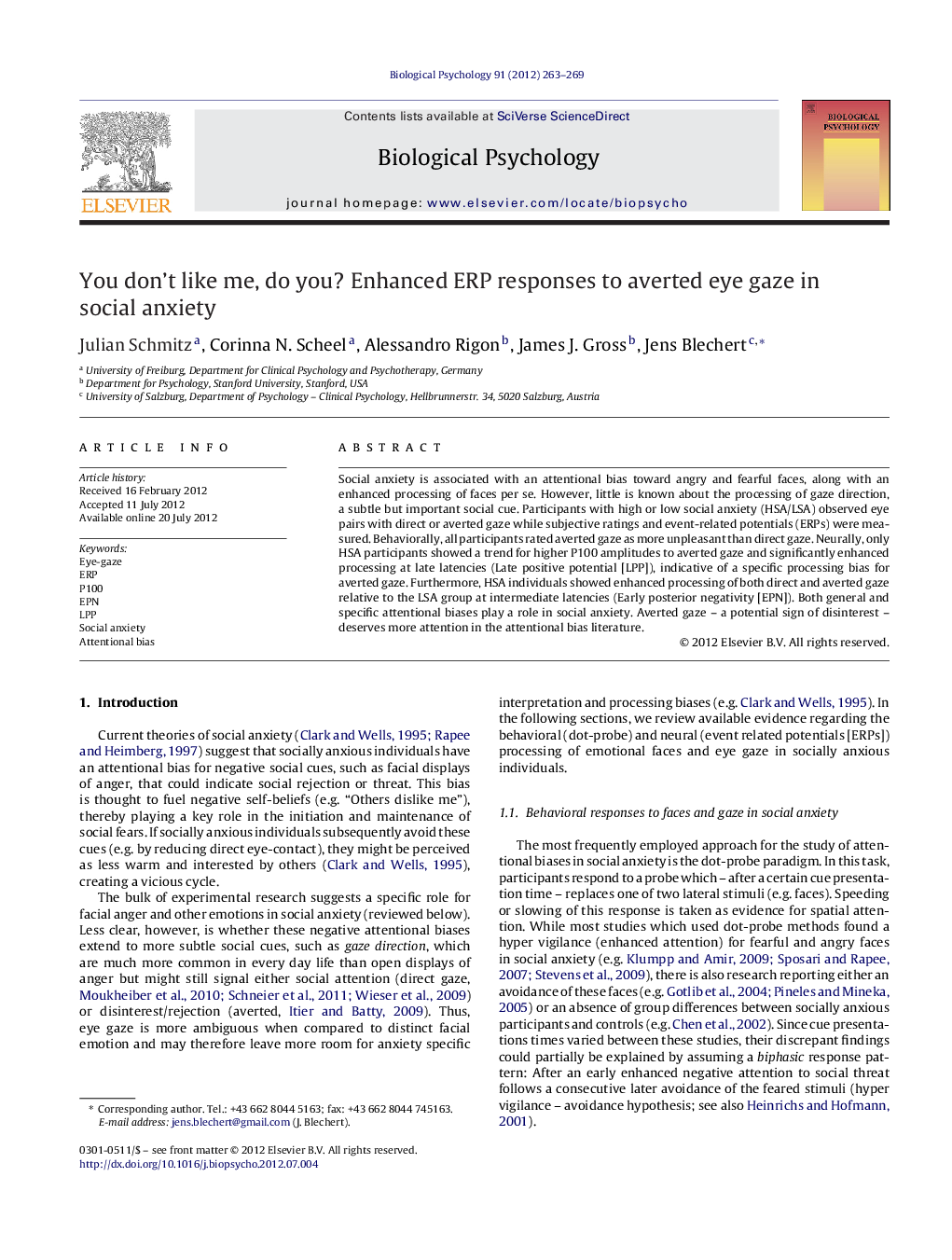| Article ID | Journal | Published Year | Pages | File Type |
|---|---|---|---|---|
| 921064 | Biological Psychology | 2012 | 7 Pages |
Social anxiety is associated with an attentional bias toward angry and fearful faces, along with an enhanced processing of faces per se. However, little is known about the processing of gaze direction, a subtle but important social cue. Participants with high or low social anxiety (HSA/LSA) observed eye pairs with direct or averted gaze while subjective ratings and event-related potentials (ERPs) were measured. Behaviorally, all participants rated averted gaze as more unpleasant than direct gaze. Neurally, only HSA participants showed a trend for higher P100 amplitudes to averted gaze and significantly enhanced processing at late latencies (Late positive potential [LPP]), indicative of a specific processing bias for averted gaze. Furthermore, HSA individuals showed enhanced processing of both direct and averted gaze relative to the LSA group at intermediate latencies (Early posterior negativity [EPN]). Both general and specific attentional biases play a role in social anxiety. Averted gaze – a potential sign of disinterest – deserves more attention in the attentional bias literature.
► Eye-gaze direction is a highly common but ambiguous social cue. ► We examine ERPs to direct and averted gaze in high and low socially anxious adults. ► Averted gaze was rated as more unpleasant than direct gaze by all participants. ► Anxious participants had higher P100/LPPs (averted gaze) and EPNs (all gaze stimuli). ► Social anxiety may be associated with an attentional bias for neutral averted gaze.
